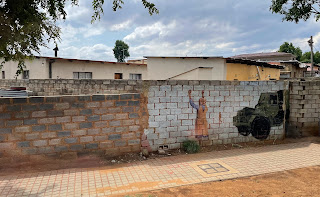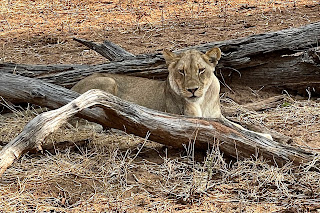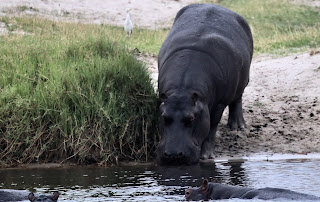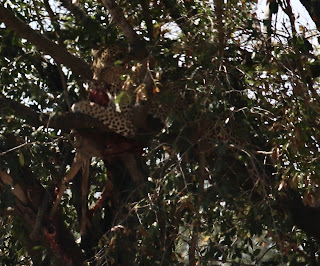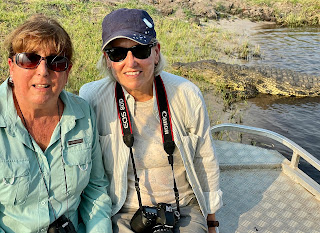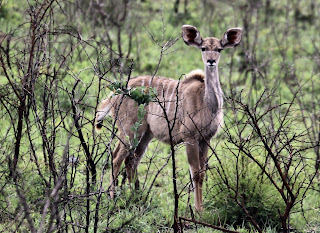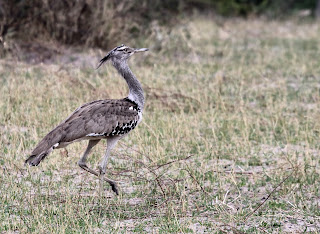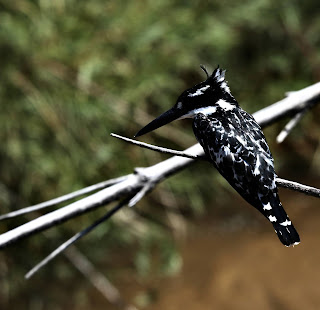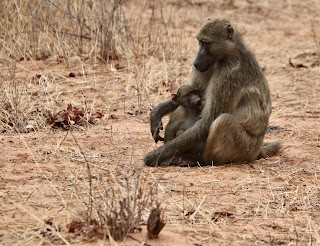Monday, May 2, 2022
A Year in Haiku
Thursday, December 30, 2021
On the Run in October: Places You May Have Heard Of
Can you identify the whereabouts of any of these photos?
Sunday, December 5, 2021
On the Run in October: ...and On Safari
Until this past October, the summer of 1996 marked my last African safari, and then all of the forays into the wild spaces unfolded in the countries of Kenya and Tanzania. This latest safari adventure takes place over 25 years later, first of all, and, second of all, in two distinctly different African countries than before: South Africa and Botswana. (We engaged in some animal viewing in Zimbabwe, too, while on a cruise on the Zambezi River and also from our accommodation's balconies--our own room and various public areas--that overlooked a primary watering hole. Also on the grounds themselves. But Pam and I did not do an official venture into the wild on a safari vehicle while in Zimbabwe.) Some things were similar and some things were quite different. Exactly what are consequences of the passage of time with humans and environment and what are manifestations of different national "style," I cannot distinguish.
Nevertheless, the distinct landscape of each location we visited and the point of time in the seasonal weather cycle certainly designed singular backdrops. Here is a glimpse of the lay of the land in Hluhluwe Game Reserve, South Africa:
And here we are in the safari vehicle--still minus two passengers--preparing to embark on the excursion:And did I mention that this particular outing now ranks as the coldest safari jaunt in my history of safari jaunts?! Do consider this photo of Pam, one taken fairly soon after we began our game drive in earnest:
10) Buffalo’s primary predator is the lion. Buffalo will try to rescue another member who has been caught. They have been observed killing a lion after it has killed a member of the group.
9) Leopards are excellent at climbing trees. They’ll often safeguard their kill in a tree to prevent lions and hyenas from stealing it. They are also strong swimmers and occasionally eat fish and crabs.
8 ) African elephants communicate across large distances at a low frequency that cannot be heard by humans.
7) Rhinos have poor vision and will sometimes attack trees and rocks by accident. However, their hearing and sense of smell are excellent, thus often making up for their poor eyesight.
6) The African buffalo is not believed to be closely related to the water buffalo even though they superficially resemble each other. And unlike the water buffalo, the dangerous African buffalo has never been domesticated.
5) The rhino is the most endangered species of the Big Five. Rhino poaching worldwide hit a 15-year high in 2009. The illegal trade is being driven by an Asian demand for horns, made worse by increasingly sophisticated poachers who are now using veterinary drugs, poison, cross bows and high caliber weapons to kill rhinos. Very few rhinos now survive outside national parks and reserves.
4) Typically, the darker a lion’s mane, the older he is.
3) The leopard is nocturnal, solitary and secretive, staying hidden during the day. They are the least seen of the Big Five.
2) Many plant species have evolved seeds that are dependent on passing through an elephant's digestive tract before they can germinate. At least one third of tree species in West African forests rely on elephants in this way for dissemination.
1) White rhinos aren’t white, but slate gray to yellowish brown in color. The species name actually takes its root from Dutch, "weit" (wide), in reference to the animal's wide muzzle.










